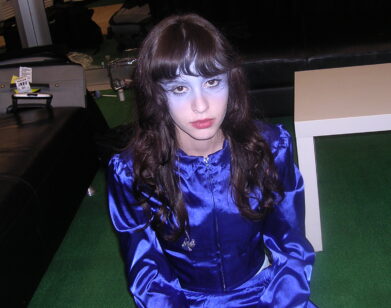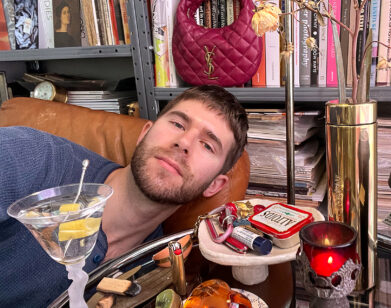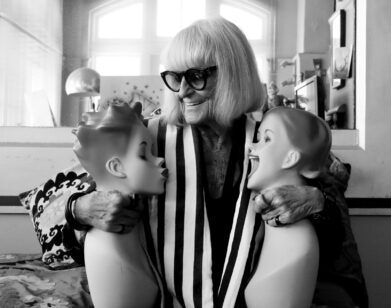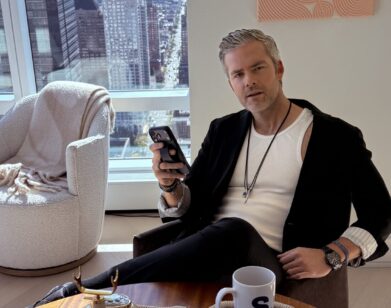Droog Passes the Dutch
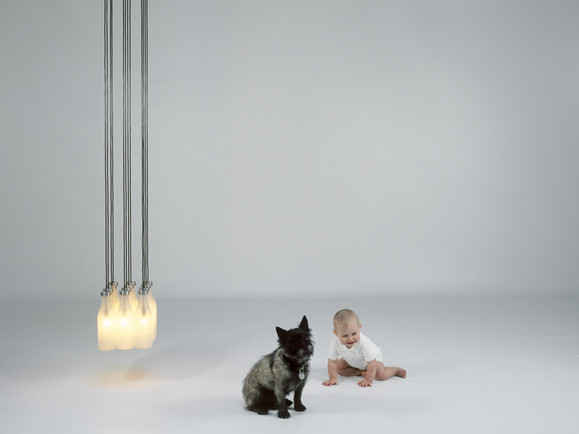
Last week Dutch design proprietor Droog opened its first US boutique in SoHo. The venture marks the third time the retailer has put its feet down, with shops already open in Amsterdam and Tokyo. As per its curatorial mission, Droog sells only the most idiosyncratic of design objects, and it’s a lifestyle brand as much as it is a retailer (it’s also a creative agency and a design lab), making it Amsterdam’s answer to Colette—that is if your lifestyle is devoted entirely to quirky, graphic interior design. Renny Ramakers, who co-founded Droog with Gijs Bakker in 1993, sat down with us to discuss Droog’s unflappable ethos, her personal design style and why design should tell a story.
KAREN BOOKATZ: You founded Droog in Amsterdam over 15 years ago. How did it begin?
RENNY RAMAKERS: Me and my partner, Gijs Bakker, noticed a new generation of young designers. They were doing very unusual stuff. We found them so interesting that we started collecting their pieces and presenting them to the world.
KB: Droog began as more of a design collective than a boutique. Did you always intend to operate free-standing commercial stores?
RR: No. In the beginning we were working with companies who were producing and distributing our products. But five years ago, we stopped using the other companies and have since been doing it all by ourselves. We pick the designers we like and they design stuff specifically for us. Likewise, we see designs we like and then seek out the designers to come and join us.
KB: Droog is more than just a collection of designers and stores. Can you explain its various parts?
RR: We have three departments: One is the factory and outlet, which is what you see here. Second is the Droog lab, which is based on defining global urgencies in the world and then trying to create a local context and then bring it into the global context. For example, we have a partner in Dubai and the urgency there has been identified as “identity.” A lot of cities, Dubai being one of them, don’t have identities anymore. So you see the same kinds of buildings—shopping malls, etc. So we are going to work with some designers in Dubai and try and look at what’s good in Dubai and make a whole project based on those positive things. Third, we have the creative agency. With the agency, we bring strategies, systems and concepts—which we get from doing the Droog lab—to companies, institutions, and governments. So, for example, maybe from the lab we’ll come up with the idea for a new type of transportation in Dubai and then, as a creative agency, we’ll talk to the government there about it.
KB: The Dutch word “droog” means ‘dry’ or ‘wry.’ What’s in a name?
RR: Our mentality is Droog, which means ‘dry’ [as in a formal and rigid approach] and ‘wry’ [as in to make things awry] and all of our concepts start from this point. So, for example, we never make a table and say, ‘Hey, this is a stylish table. Period.’ We always have a concept behind our designs, and the way the designs are executed is always straightforward-ie: dry. But it’s never too straightforward—there’s always some sort of twist. There’s always more—ie: wry. So, we have a very specific style and people expect our products to be special. You can easily pick out at something that is not very “us,” because it’s simply not droog. We’ve been using this formula for 15 years.
KB: Droog has a mission “to serve as an anti-statement; a no-nonsense, down-to-earth design mentality that opposes the high style and form-based world of design.” To what kind of art and design is Droog opposed?
RR: Basically, we don’t like design without content. A lot of design is just styling and image. All of our products must have a story. Good design has a story to tell.
KB: Anyone can come into your store, purchase a cool item and then, possibly, fancy him/herself to be a collector of sorts. What do you think about this idea of the “democratization of design?”
RR: Well, we want to open up our objects to everybody. We have really expensive stuff and we have really cheap stuff. So in that sense, it’s affordable for everybody. But no matter what, it’s all Droog.
KB: What do you have in your home?
RR: Well it looks nothing like this [referring to the store]. I have a few Droog objects in my house and a lot of other types of objects as well, but I’m not a collector. I only buy an object because it moves me and it always needs to tell a story. I also have carpets from Turkey, Iran, and Africa and special African pieces, and traditional Japanese things. [Pointing to group of products in the store], I wouldn’t live with all of these, but I do have a few of them.
KB: How would you describe the items that you sell—do you consider them to be design or art? Does that distinction matter to you?
RR: For me they are design, not art. In art, the artist is totally is free. With design, it always ends up having to be functional, and for an artist, that is not necessary.
KB: I see that you have several eco-friendly objects in the store, like for example, the “milk bottle lamp” and the “tree-trunk bench.” That said, how important is “green” design to the Droog ideal?
RR: Well, it’s not necessarily the only thing we seek. It’s very topical at the moment. But we’ve been doing green stuff for a long time. [Pointing at the “milk bottle lamp”], we made that back in 1991, so designers were interested in it back then too. [Pointing to a collection of laser-cut plywood furniture comprised of tables, stools and a movable wall], and the idea behind this collection is to have it produced locally. They’re all laser cut, using a blueprint. So, you can send an email to our distributor in Tokyo, for example, and they can make it for you there. So you avoid transport and produce things locally-this is green design with an imagination. But, if you only focus on green design, there’s no space for other things and you become too narrow-minded. There should always be space for imagination.
KB: What is the future like for Droog?
RR: I’d open the next store in Hong Kong, because it’s the hub for all of Asia and Australia (but not for Japan because that is a different case). But I have no plans to do anymore stores right now because [looking up and around at the new store] this is really something. I didn’t choose Tokyo as the second store, our distributor there did. It’s a very small store, because you know what? Japanese people like small things! The Tokyo store has even asked us to make some of our products smaller. This was eye-opening for me.
Droog is located at 76 Greene Street, New York.


